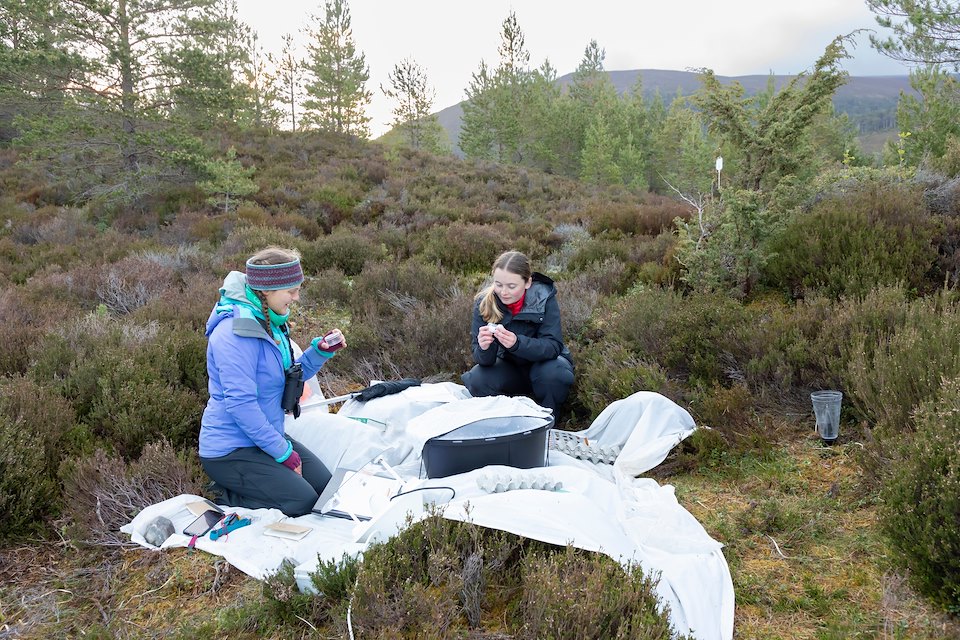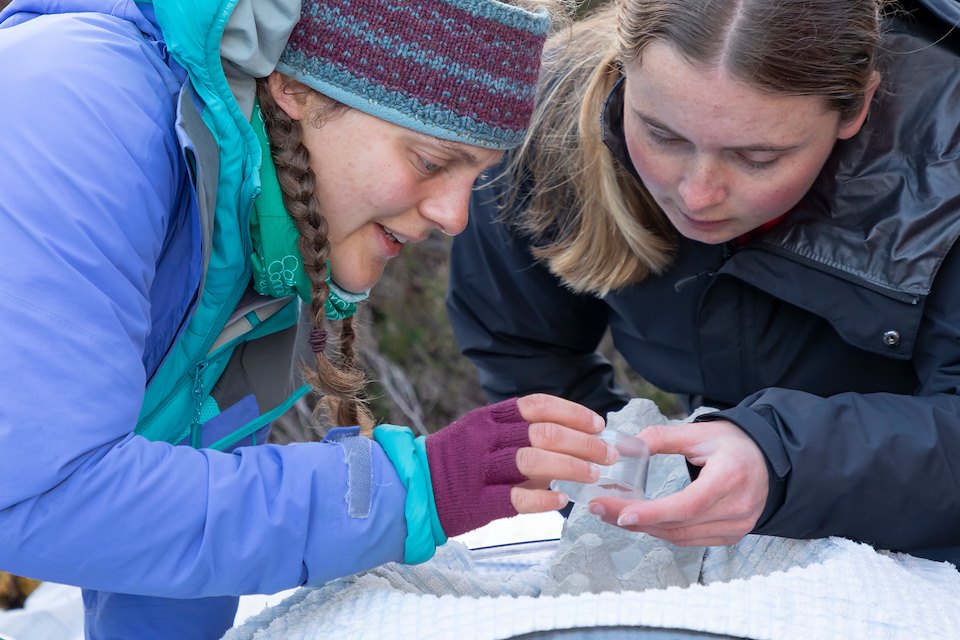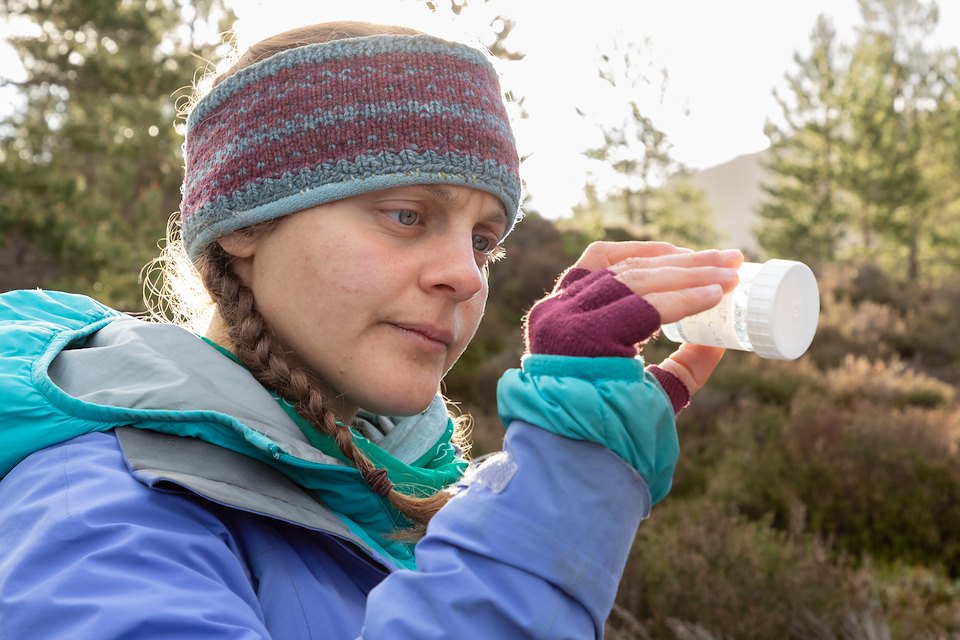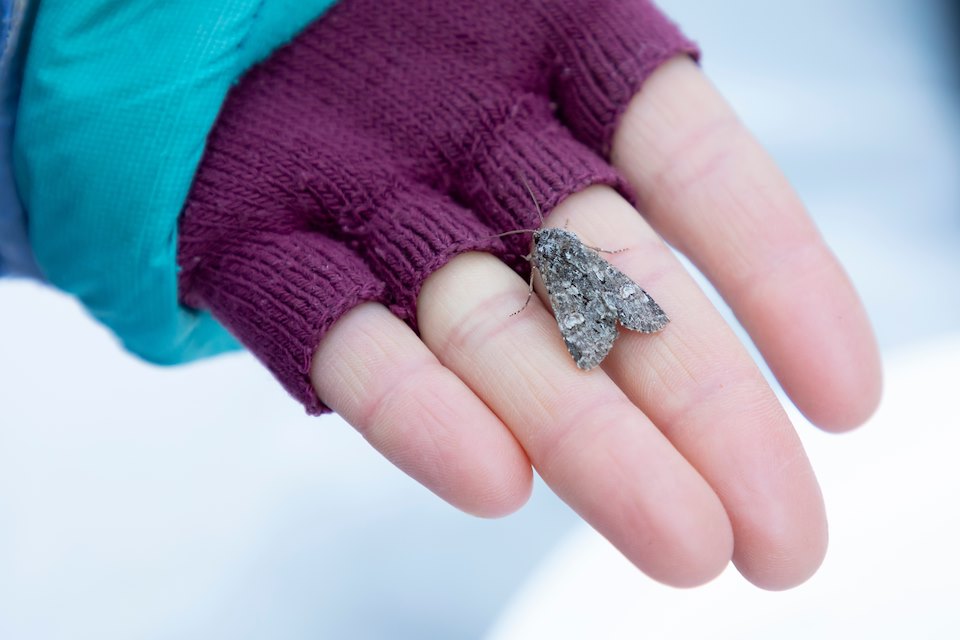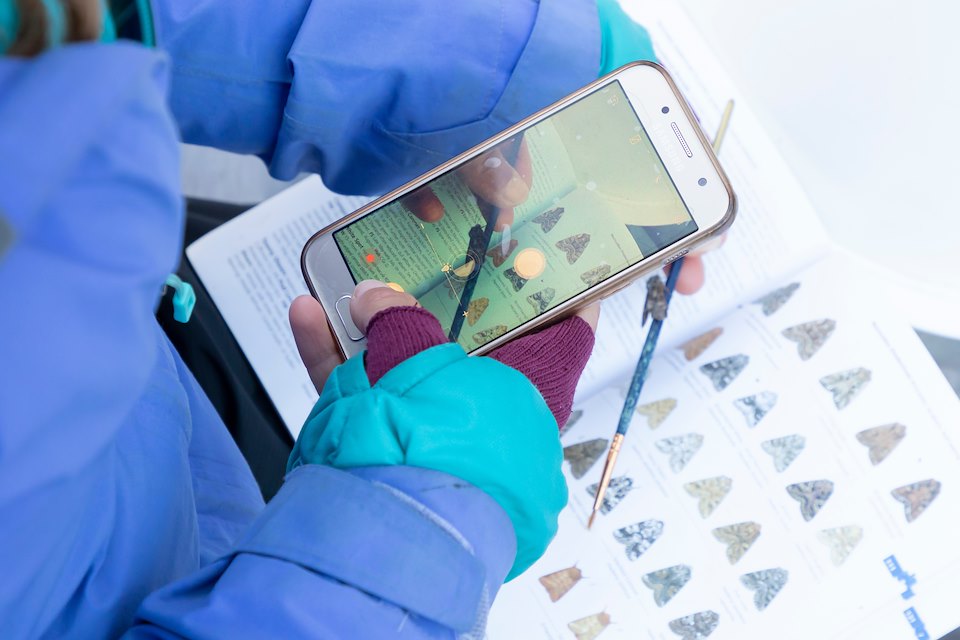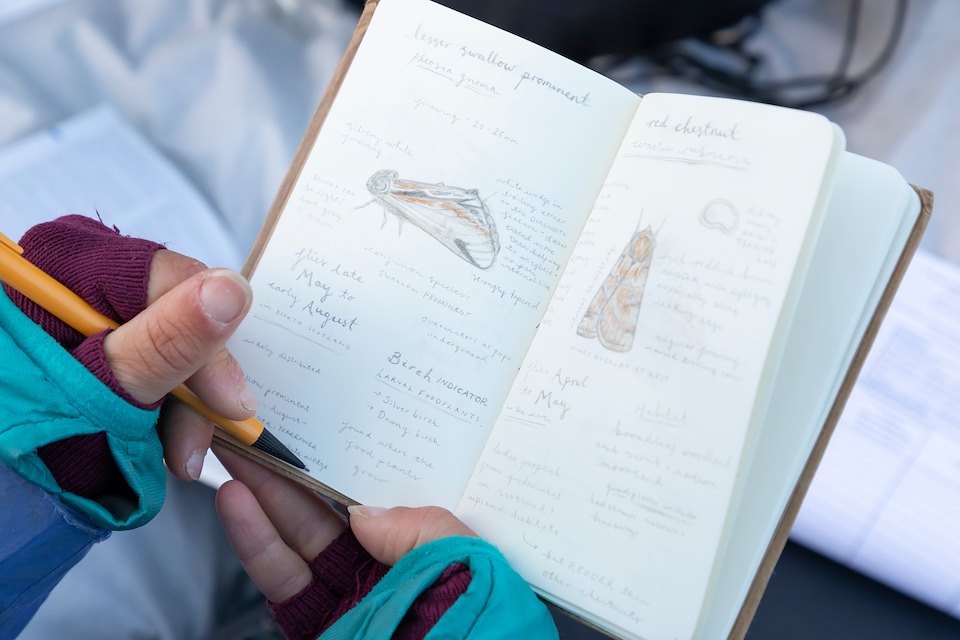Ellie And Christina's Wild Night Out
#SBPNextGen
Experiencing wildlife up close helped steer two young conservationists into roles in a landscape-scale restoration project. They want the doors to such opportunities thrown wide open.
A Friday night out for two young women in Scotland’s Cairngorms National Park is not what you might expect. Granted, there are bright lights and an all-nighter involved but alcohol is off-limits and the only wild sounds are those emanating from the surrounding pine forest. Ellie Dimambro-Denson and Christina Hunt are camped out in Inshriach Forest near Aviemore, having earlier set up a moth trap, as part of their monitoring work for the landscape-scale restoration project Cairngorms Connect.
At 5am their alarms wake them from their short slumber and they head out to check the trap before sunrise. In her role as monitoring officer for Cairngorms Connect, Ellie is responsible for supporting the project’s conservation science, helping to inform management decisions. “Moths are indicator species,” she says, “and they tell us a lot about the state of the environment. Ellie is passionate about the small stuff. “Insects are easy to ignore, but they’re so beautiful and amazingly diverse. And with moth trapping you never know what’s going to turn up – it’s like waking up on Christmas morning.”
Ellie has loved the outdoors from an early age but says as a child she “saw the natural world as distant, something that existed only in David Attenborough documentaries”. Then in her later teenage years she started to notice declines in wildlife in her local area as green spaces were swallowed up, something that concerned her. This led to a degree in biology followed by a year-long internship at the RSPB’s flagship Abernethy reserve in the Cairngorms. “It was absolutely incredible,” she enthuses. “I spent a night in a hide monitoring capercaillie and camped high in the Cairngorms to survey ptarmigan, waking up to see the sunrise over Loch A’an. I loved it.”
Both Ellie and Christina hope the work they’re doing will inspire others. “Many young people are aware of environmental issues but they’re increasingly disconnected from the natural world,” says Ellie. “Visiting places like the Cairngorms and seeing species and natural systems functioning on a really big scale can provide a spark.”
Christina adds: “Young people need to experience and see things for themselves. On our undergraduate course we had a field day learning bird calls. It was something I hadn’t paid attention to before but now I’m always listening out and learning different calls. This is something I try to pass on when I’m out with friends and family.”
“I camped high in the Cairngorms to survey ptarmigan, waking up to see the sunrise over Loch A'an. I loved it.”
With more young people looking to work in conservation, Ellie is concerned about the current barriers, especially financial, and “would like to see greater support to make it as accessible to as many people as possible and to increase diversity within the sector”.
She is hopeful for the future. “I’d struggle to do what I do without being optimistic,” she says. “I hope that more projects like Cairngorms Connect will get underway.”
She believes more funding is required, so there can be a “big push to support similar projects and the conservation community more broadly in the next 10, 100 years and beyond”.
“I’m optimistic it will happen,” she smiles.


